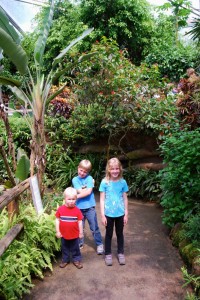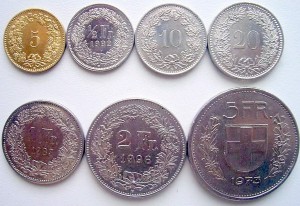It’s been a while since I wrote a post in this series. The kids and I are home this week, playing and going on outings. So, I thought I would highlight a couple of things that continue to make our daily life here a little different than back home.
Mustard
I took all three kids to the grocery store this week, a feat that is even more challenging without a car and without those neat car-shaped grocery carts, which would never fit around the corners here. There are tons of little differences in the products here, starting with different brands and languages. But, there are a couple of categories I wanted to mention specifically. First, a lot of the food that we buy here is similar to what we have back home, but it is just packaged differently. Mustard and mayonnaise come in large, aluminum tooth-paste tubes.  Apple sauce comes in tin cans. And juice and milk often come in rectangular cartons, like a giant juice box. There are a couple of things here that are taboo in the US like Aromat (a seasoning shaker of MSG) and saccharine tablets for sweetening coffee. The supposed health risks of these items have been debunked, but they never recovered in the US. And there are a couple of things that I just can’t find here, including baking soda and brown sugar (I’ve learned to substitute “raw cane sugar,” though it doesn’t pack the way I’m used to).
Apple sauce comes in tin cans. And juice and milk often come in rectangular cartons, like a giant juice box. There are a couple of things here that are taboo in the US like Aromat (a seasoning shaker of MSG) and saccharine tablets for sweetening coffee. The supposed health risks of these items have been debunked, but they never recovered in the US. And there are a couple of things that I just can’t find here, including baking soda and brown sugar (I’ve learned to substitute “raw cane sugar,” though it doesn’t pack the way I’m used to).
These are just a few of the many differences in food products that make grocery shopping or opening my refrigerator almost a cultural experience.
Bat Caves
 Today I took the kids to a place called Papiliorama northwest of Bern. It has an outdoor petting farm and playground, and three large enclosures: butterflies, jungles, and nocturnal animals. The latter enclosure was very dark, lit only by dim blue lights. There were night sounds playing as you walk through a maze past owls, fish and other animals. We were squatted down looking at some fish when I noticed something swoop by. “Was that a bat?” I wondered to myself. And, sure enough, moments later another one swooped by just ahead of us. I didn’t say anything, as I didn’t want to scare the kids, so we just kept walking. More and more of them flew by, and James finally said something. I explained that they were just little fruit bats, and they wouldn’t hurt us. The kids seemed okay with this, and Henry repeated my explanation every time one flew by.
Today I took the kids to a place called Papiliorama northwest of Bern. It has an outdoor petting farm and playground, and three large enclosures: butterflies, jungles, and nocturnal animals. The latter enclosure was very dark, lit only by dim blue lights. There were night sounds playing as you walk through a maze past owls, fish and other animals. We were squatted down looking at some fish when I noticed something swoop by. “Was that a bat?” I wondered to myself. And, sure enough, moments later another one swooped by just ahead of us. I didn’t say anything, as I didn’t want to scare the kids, so we just kept walking. More and more of them flew by, and James finally said something. I explained that they were just little fruit bats, and they wouldn’t hurt us. The kids seemed okay with this, and Henry repeated my explanation every time one flew by.
The trail led into another area through some of those thick plastic blinds intended to keep things from escaping. Suddenly there were even more bats flitting around – apparently the first few were just the ones that had gotten out of the enclosed area. Several bats flew so close to me, I felt the breeze as they passed. Then the path led into a cave. It was no more than 6 feet tall or across and about 15 feet long, and there were bats everywhere. They were hanging from the ceiling and swooping through at breakneck speed. I tried to keep my strong, confident mom face on, but all I could think was “You have got to be kidding me!”
The kids and I had a quick discussion about how bats can’t actually see, and the only way they don’t run into things is by sonar. Then I ducked my head down to Henry’s stroller and walked through with bats dangling above and whooshing all around. Every time I lifted my head to see where I was going, a bat would swoosh within inches of my face before turning at the last moment. I definitely felt a wing tip on my head, and I may have screamed a couple of times. Although it raised my adrenaline levels, I have to admit it was actually a pretty cool experience. And the kids loved it!
The reason I am writing about this here is that something like this would never happen in America. I’ve seen bats at the zoo in Milwaukee, but always behind glass. I’ve had access to animals up close, but not fast-moving animals in a claustrophobically confined space. It’s too scary! Or dangerous! What if someone got scratched?! They might sue! Well, the Swiss don’t seem to have these concerns. It’s not that things don’t happen. They do. I saw a kid from a field-trip group holding his arm and complaining that a bat scratched him. But they didn’t seem to mind. Scratches happen. That’s life. Besides, that kid was probably flailing his arms around, so that’s what he gets. The Swiss would never change something for everyone because of minor risks or the stupidity or carelessness of a few people. Besides, that kid, as well as all the kids who gathered around to see his scratch, learned a valuable lesson about personal responsibility… Always keep your arms down when walking through a bat cave.

